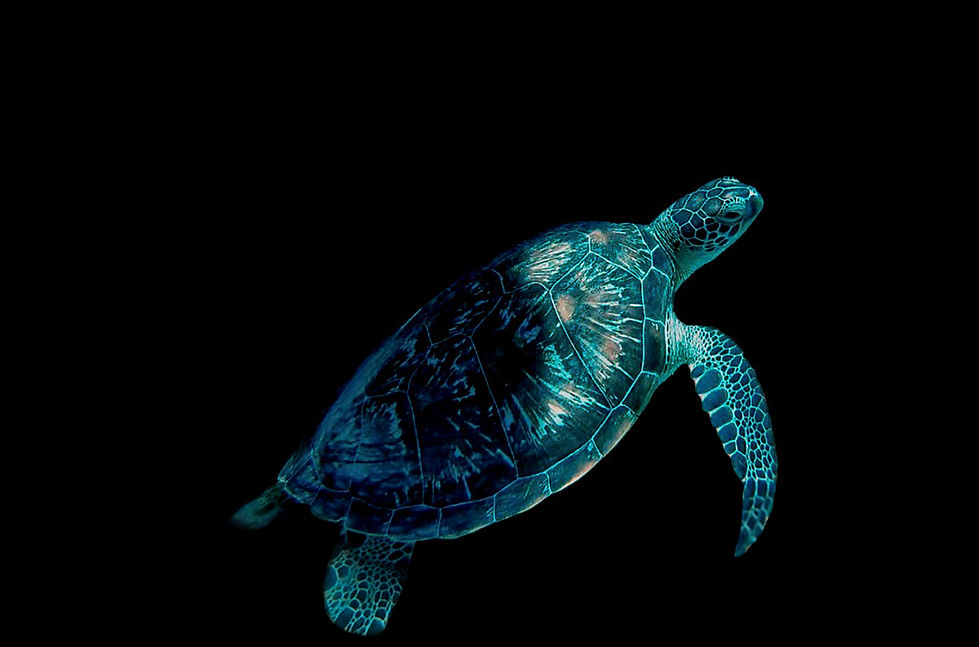
Green Turtles Seagrass Diet in the Gili Islands
Indonesia

The Gili Islands are an archipelago of three islands off the northwest coast and part of Lombok, Indonesia: Gili Trawangan, Gili Meno, and Gili Air. These tourist destinations cover an area of 15km2, with Bali located to the west of Gili Trawangan, about 35km away, accessible by boat.
The Islands’ tropical climate, due to their position near the equator, means they experience an average annual temperature of 28°C, with a range between 22 °C to 34 °C, and both a wet and dry season, from November to April and May to October, respectively.
SEA TURTLE SPECIES
Surrounding the islands is an abundance of marine life, including the critically endangered hawksbill turtle (Eretmochelys imbricata) and the endangered green turtle (Chelonia mydas). The latter is very common around the Gili Islands, especially at Turtle Point off of Gili Meno, where more than 20 turtles can sometimes be seen in a single dive. The Gili Islands are one of a few places on earth you are almost guaranteed to see turtles in the wild, thus, they are known as an important location for turtle conservation.
"Green turtles are the only herbivore amongst turtle species, with seagrass predominantly the main part of their diet"
GREEN TURTLE
The green turtle can grow to lengths of 0.8-1.2m, the longest recorded at 1.5m long, and weigh between 68-180kg. The greenish colour of their cartilage and fat is what gives these turtles their name, not after the colour of their shell. Along with other species of sea turtles, they migrate between the beaches they hatched from and their feeding grounds, mainly returning to the same beach they hatched from when they need to lay their own eggs.
SEAGRASS DIET & ECOSYSTEM
Green turtles are the only herbivore amongst turtle species, with seagrass predominantly the main part of their diet. Seagrasses are submerged plants, located in shallow marine waters. As they graze on seagrasses and algae, it helps keep up the maintenance and increases the productivity of seagrass beds.
These beds act as nurseries for many fish and invertebrate species, hiding juveniles from predators, as well as seagrass leaves enabling attachment of eggs and larvae, like sea squirts. Some species are considered valuable by commercial fisheries and, therefore, human food security. By green turtles eating seagrass, they digest it quickly and produce recycled nutrients for the fauna and flora of the seagrass ecosystem. Seagrass also protects the coast from storms and strong currents via its extensive root system which stabilises the seafloor. This buffering proficiency provides refuge for multiple species, including echinoderms, such as sea urchins, starfishes, and sea cucumbers.

THREATS & SOLUTIONS
Green turtles are endangered due to overharvesting of their eggs, adults being hunted, getting trapped in fishing gear, and habitat loss. Habitat loss of nesting sites is due to destroyed or disturbed beaches as a result of coastal development, vehicle traffic, and additional human activities. Habitat loss of feeding grounds, like seagrass beds, can also be disturbed by onshore coastal development via water pollution and sedimentation. Luckily, areas like the Gili islands are classed as a Marine Protected Area (MPA) called the Gili Matra Marine Park, covering an area of 30km2 including the land cover. By having marine protected areas, sea turtles, including green turtles can have a chance to survive by keeping the nesting and feeding sites as undisturbed as possible.